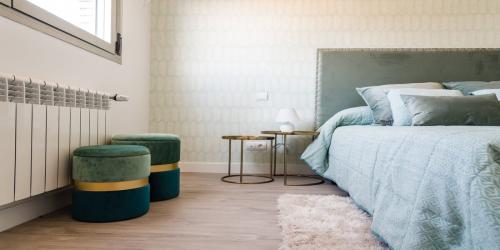Tips for Decorating a Child's Bedroom That Grows with Them

Decorating a child's bedroom can be delightful and daunting, especially considering how quickly children grow and their tastes evolve. A room perfect for a toddler may no longer suit a pre-teen's preferences. By incorporating thoughtful design elements and versatile furniture, however, creating a stylish and functional space that adapts seamlessly to your child's changing needs and interests is possible. This guide will provide practical tips and creative ideas to help you design a bedroom that can withstand time.
Choose a Neutral Color Palette
A neutral color palette is a timeless bedroom design foundation. Shades such as whites, grays, beiges, and soft pastels offer a calm and flexible backdrop that can easily be updated as a child's tastes and interests evolve. Neutral walls and furniture pieces create a blank canvas. This approach simplifies future makeovers and helps the room maintain a cohesive and sophisticated look as your child grows.
Invest in Adjustable Furniture
Selecting adjustable furniture is a smart investment when designing a child's bedroom that can grow with them. Pieces such as convertible cribs that transform into toddler beds, adjustable height desks, and extendable wardrobes ensure that the furniture remains practical and functional through various stages of your child's development. This adaptability saves time and money, as you won't need to replace key items frequently. By opting for versatile furnishings, you create a flexible, enduring space that adapts effortlessly to your child's changing needs and preferences.
Use Modular Storage Solutions
Incorporating modular storage solutions into your child's bedroom design is an excellent way to maintain organization and accommodate evolving storage needs. Modular units, such as stackable bins, adjustable shelving, and cubby systems, offer flexibility to easily reconfigure and add to the storage system as your child accumulates more belongings. These versatile storage options can be customized. Keeping the room tidy becomes much simpler, and the ability to reconfigure storage solutions helps the space evolve with your child's changing interests and organizational habits.
Incorporate Personalizable Elements
To ensure your child's bedroom feels uniquely theirs, incorporate personalizable elements that reflect their evolving interests and personality. Items such as custom wall decals, framed artwork, and name plaques can be easily updated as your child's tastes change. Additionally, consider area rugs and carpet options that inject color, pattern, and comfort into the room. These flooring choices add a cozy touch and can be swapped out without major renovation as your child ages, allowing for frequent refreshes in style and theme. Personalizing the space in these ways allows your child to express themselves freely while maintaining a flexible and adaptable design.
Leave Room for Play and Study Areas
Designing a child's bedroom that accommodates play and study areas is essential for their overall development and well-being. By leaving ample space for these activities, you provide a balanced environment where your child can engage in imaginative play, foster creativity, and focus on their homework or educational pursuits. Consider using soft mats or rugs for the play area to create a safe and inviting space with age-appropriate toys and activities. For the study area, opt for a sturdy desk and a comfortable chair, ensuring the setup is ergonomically correct to support healthy posture. A well-defined study area with good lighting and minimal distractions will help establish productive habits.
Consider Future Needs and Interests
Planning for your child's future needs and interests is crucial when designing a bedroom that will stand the test of time. Anticipate changes by choosing versatile furniture and decor that can easily adapt to new hobbies, activities, and preferences. For instance, include a desk that can serve as a coloring station for a young child and a study desk for a teenager, or opt for shelving units that can store toys now and books or sports equipment later. This forward-thinking approach helps create a space that meets your child's evolving needs and interests.
Designing a child's bedroom that grows with them requires careful consideration and thoughtful planning, but the rewards are well worth the effort. By embracing versatile color palettes, investing in adjustable and modular furniture, and incorporating personalizable elements, you can create a space that adapts to your child's changing needs and tastes. Ensuring the room accommodates play and study areas further supports your child's development. With these practical and creative strategies, you can design a bedroom that remains functional, stylish, and uniquely theirs, providing a comfortable and harmonious environment throughout their formative years.








Comments